Cruithne: Legendary King, His Seven Sons And The First Celtic Tribe That Inhabited British Isles
A. Sutherland - AncientPages.com - An ancient myth says that at the beginning of time, there was a legendary king of the Picts, Cruithne (from the Gaelic word: 'An Cruithain' (Pict) - naturally, 'painted people,' was a son of Cing (in Gaelic: 'strong or brave').
Reconstructed crannog on Loch Tay. Image credit: Dave Morris - CC BY 2.0
Considered to be the father of the Picts, Cruithne, the first king of the Picts, reigned for a hundred years. He had seven sons, and their names were: Fib, Fidach, Foclaid (or Fotla), Fortrenn, Caitt (or Cat), Ce, and Circenn.
If Cruithne really existed, he would have lived about 442 or 476 BC. Historically speaking, the myth seems accurate. These seven provinces did exist within Pictish territories.
In his book, 'The Problem Of The Picts' F.T. Wainwright mentions an ancient account of Scotland called 'De Situ Albanie,' the first of seven Scottish documents ('Pictish Chronicles ') recorded in the so-called 'Poppleton Manuscript,' probably written between 1202 and 1214, in the reign of the William the Lion, by a French-speaking resident of Scotland (north of the Forth).
'Cruithne' also refers to the whole tribe of people – one of the earliest Celtic tribes known to have inhabited Ireland and Britain, who appeared in the British Isles between approximately 800 and 500 BC.
These people (of early medieval Ireland) probably migrated from the mainland; they may have been descendants of prehistoric – native tribes - that inhabited the British Isles since the Stone Age.
Their heartland was in Ulster and included parts of the present-day counties of Antrim, Down, and Londonderry, and they are also said to have lived in parts of Connacht and Leinster. Their name is the Irish equivalent of Priteni, an ancient name for the Celtic Britons, and was sometimes used to refer to the Picts.
However, there is still a debate among scholars as to the relationship of the Cruithne (Cruthin) with the Britons and Picts. Or were they perhaps Partholonians, mythical early invaders of Ireland?
The history of the earliest tribes in the British Isles remains obscure.
The name 'Cruithne' could also be related to the early Irish word 'Cruth,' which means 'shape' or 'design.' Many historians have said that the Picts were the 'painted people,' it has been suggested that they had a habit of tattooing themselves; they may have decorated and tattooed their faces and bodies with dyes.
According to the Collins Encyclopedia of Scotland, "the Picts did not 'arrive' - in a sense they had always been there, for they were the descendants of the first people to inhabit what eventually became Scotland".
The Picts are often described as the descendants of the indigenous Iron Age people of northern Scotland and it is thought that they came originally from Scandinavia as a cohesive group. Since they left no written record of their history, what is known of them comes from later Roman and Scottish writers and from images the Picts themselves carved on stones..."
The Irish called the Picts the 'Cruithne,' and the Romans called them 'Picts,' a general term covering many separate tribes.
"These people had mysterious language and symbols. The Picts’ language is a mystery and the meaning of the symbols stones they left remains an enigma. The language the Picts spoke has been lost, but more than 250 stones with Pictish symbols survived and these can give us a better understanding of the Picts.
Some Pictish stones have written inscriptions. Pictish letters - called 'ogam' - had no curves, so they were well suited for carving on stone..." 1
Written by – A. Sutherland AncientPages.com Staff Writer
Updated on December 11, 2023
Copyright © AncientPages.com All rights reserved. This material may not be published, broadcast, rewritten or redistributed in whole or part without the express written permission of AncientPages.com
Expand for referencesReferences:
Foster, Sally M. Picts, Gaels and Scots
Sir Daniel Wilson, The Archaeology and Prehistoric Annals of Scotland
More From Ancient Pages
-
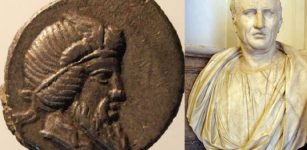 Scientists Solve The Mystery Of Cicero’s Puzzling Words By Analyzing Ancient Roman Coins – Evidence Of Financial Crisis?
Artifacts | Apr 6, 2022
Scientists Solve The Mystery Of Cicero’s Puzzling Words By Analyzing Ancient Roman Coins – Evidence Of Financial Crisis?
Artifacts | Apr 6, 2022 -
 On This Day In History: Execution Of Saints Crispin And Crispinian – On Oct 25, 286
News | Oct 25, 2016
On This Day In History: Execution Of Saints Crispin And Crispinian – On Oct 25, 286
News | Oct 25, 2016 -
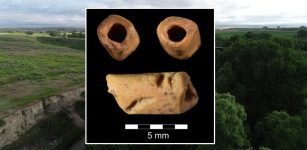 Oldest Bead In America Discovered At La Prele Mammoth Site, Wyoming
Archaeology | Feb 13, 2024
Oldest Bead In America Discovered At La Prele Mammoth Site, Wyoming
Archaeology | Feb 13, 2024 -
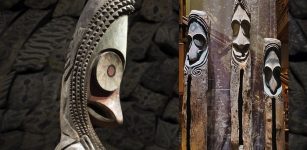 Curious Alien-Looking Slit Gongs Figures From Vanuatu Allowed Villagers To Communicate
Ancient Traditions And Customs | Sep 24, 2018
Curious Alien-Looking Slit Gongs Figures From Vanuatu Allowed Villagers To Communicate
Ancient Traditions And Customs | Sep 24, 2018 -
 Traces Of The Watchers In Ancient China Shed New Light On This Mysterious Lost Race
Civilizations | Aug 11, 2018
Traces Of The Watchers In Ancient China Shed New Light On This Mysterious Lost Race
Civilizations | Aug 11, 2018 -
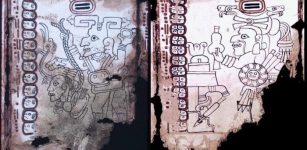 Grolier Codex – Oldest, Unique, Genuine Pre-Columbian Maya Manuscript That Survived Spanish Inquisition
Artifacts | Jan 20, 2018
Grolier Codex – Oldest, Unique, Genuine Pre-Columbian Maya Manuscript That Survived Spanish Inquisition
Artifacts | Jan 20, 2018 -
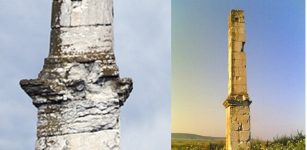 Archaeologists Will Excavate Unique Ancient Roman Obelisk Near Lesicheri, Bulgaria
Archaeology | Apr 8, 2016
Archaeologists Will Excavate Unique Ancient Roman Obelisk Near Lesicheri, Bulgaria
Archaeology | Apr 8, 2016 -
 Thor: Brave And Mighty Thunder God In Norse Mythology
Featured Stories | Nov 7, 2016
Thor: Brave And Mighty Thunder God In Norse Mythology
Featured Stories | Nov 7, 2016 -
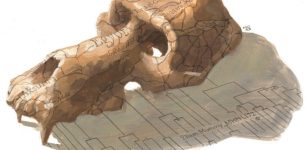 Can Baboons Solve The Ancient Mystery Of Punt?
Archaeology | Oct 25, 2023
Can Baboons Solve The Ancient Mystery Of Punt?
Archaeology | Oct 25, 2023 -
 Ancient European Buildings Form A Sacred Symbol When Viewed From The Air – Scientist Reveals
Ancient Symbols | Jun 15, 2018
Ancient European Buildings Form A Sacred Symbol When Viewed From The Air – Scientist Reveals
Ancient Symbols | Jun 15, 2018 -
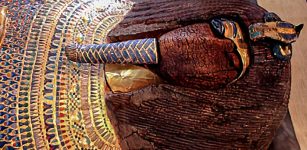 Dispute And Mystery: Strange Case Of The Tomb KV55 In The Valley Of Kings, Egypt
Civilizations | Oct 8, 2015
Dispute And Mystery: Strange Case Of The Tomb KV55 In The Valley Of Kings, Egypt
Civilizations | Oct 8, 2015 -
 On This Day In History: Martin Luther Was Excommunicated From The Catholic Church – On Jan 3, 1521
News | Jan 3, 2017
On This Day In History: Martin Luther Was Excommunicated From The Catholic Church – On Jan 3, 1521
News | Jan 3, 2017 -
 Ji Gong: Legendary Ancient Monk Who Defended People Against Injustice
Chinese Mythology | Jan 31, 2016
Ji Gong: Legendary Ancient Monk Who Defended People Against Injustice
Chinese Mythology | Jan 31, 2016 -
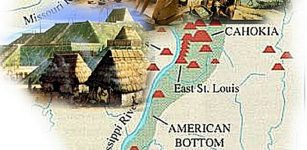 Unsolved Mysteries Of Cahokia – What Really Happened With The Large Metropolis?
Civilizations | Jan 15, 2015
Unsolved Mysteries Of Cahokia – What Really Happened With The Large Metropolis?
Civilizations | Jan 15, 2015 -
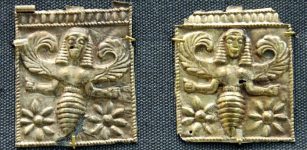 Bees – Embodiment Of Human Soul, Divine Messengers Symbolizing Invisible Bridge Connecting Life And Death
Featured Stories | Jul 26, 2023
Bees – Embodiment Of Human Soul, Divine Messengers Symbolizing Invisible Bridge Connecting Life And Death
Featured Stories | Jul 26, 2023 -
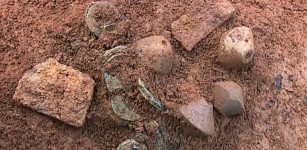 2,000-years-old tomb found in S. China
Archaeology | Apr 6, 2016
2,000-years-old tomb found in S. China
Archaeology | Apr 6, 2016 -
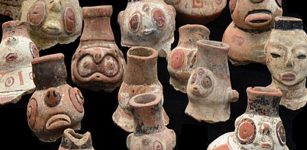 Ancient DNA Tells Story Of Caribbean’s Early Humans
Archaeology | Dec 28, 2020
Ancient DNA Tells Story Of Caribbean’s Early Humans
Archaeology | Dec 28, 2020 -
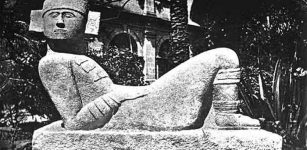 Chacmool (‘Chac-Mool’) – Intriguing Pre-Columbian Statue Found At Many Ancient Sites In Mesoamerica
Featured Stories | May 22, 2021
Chacmool (‘Chac-Mool’) – Intriguing Pre-Columbian Statue Found At Many Ancient Sites In Mesoamerica
Featured Stories | May 22, 2021 -
 16 Dead Sea Scrolls Fragments Are Forgeries – U.S. Bible Museum Says
Artifacts | Mar 15, 2020
16 Dead Sea Scrolls Fragments Are Forgeries – U.S. Bible Museum Says
Artifacts | Mar 15, 2020 -
 A 200-Year-Old Swedish Mystery Remains Unsolved
Featured Stories | Oct 7, 2015
A 200-Year-Old Swedish Mystery Remains Unsolved
Featured Stories | Oct 7, 2015



